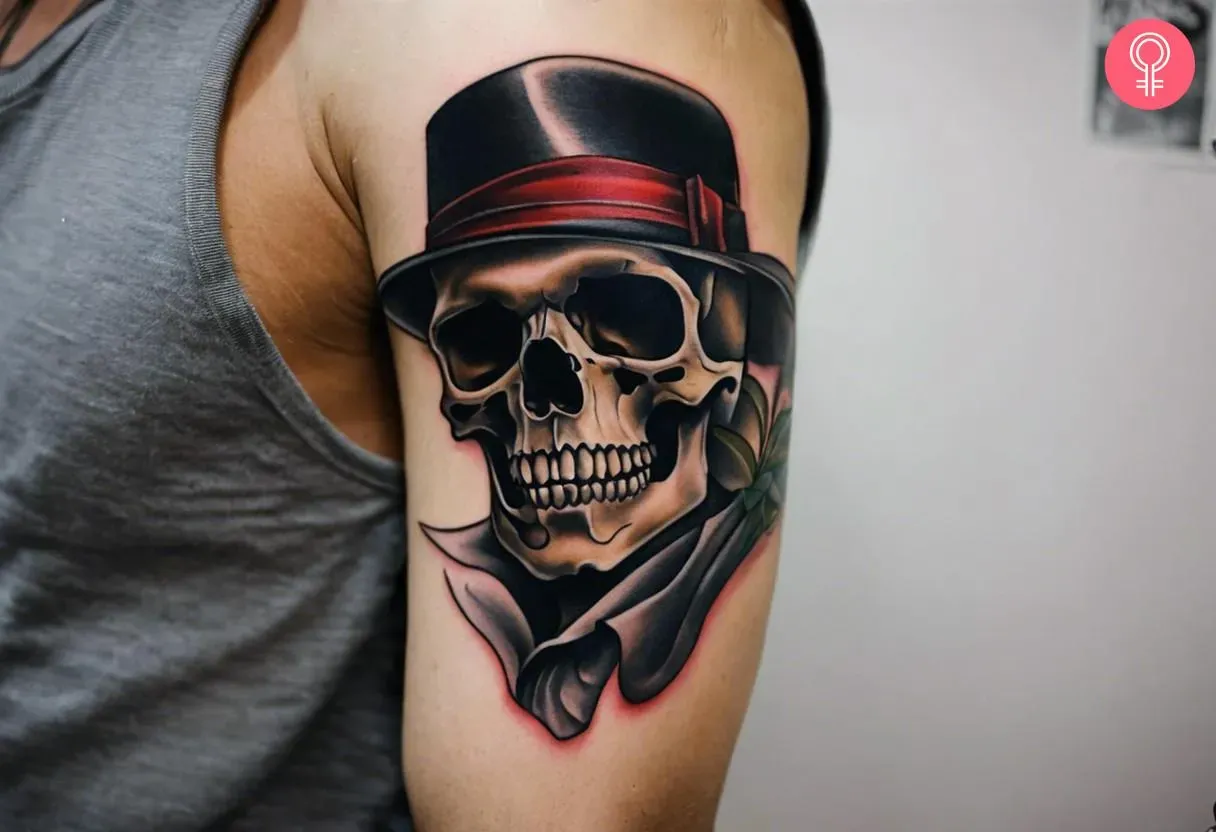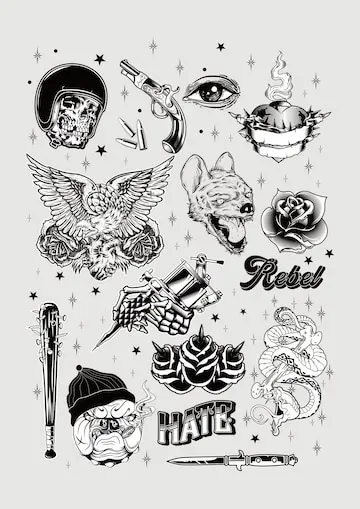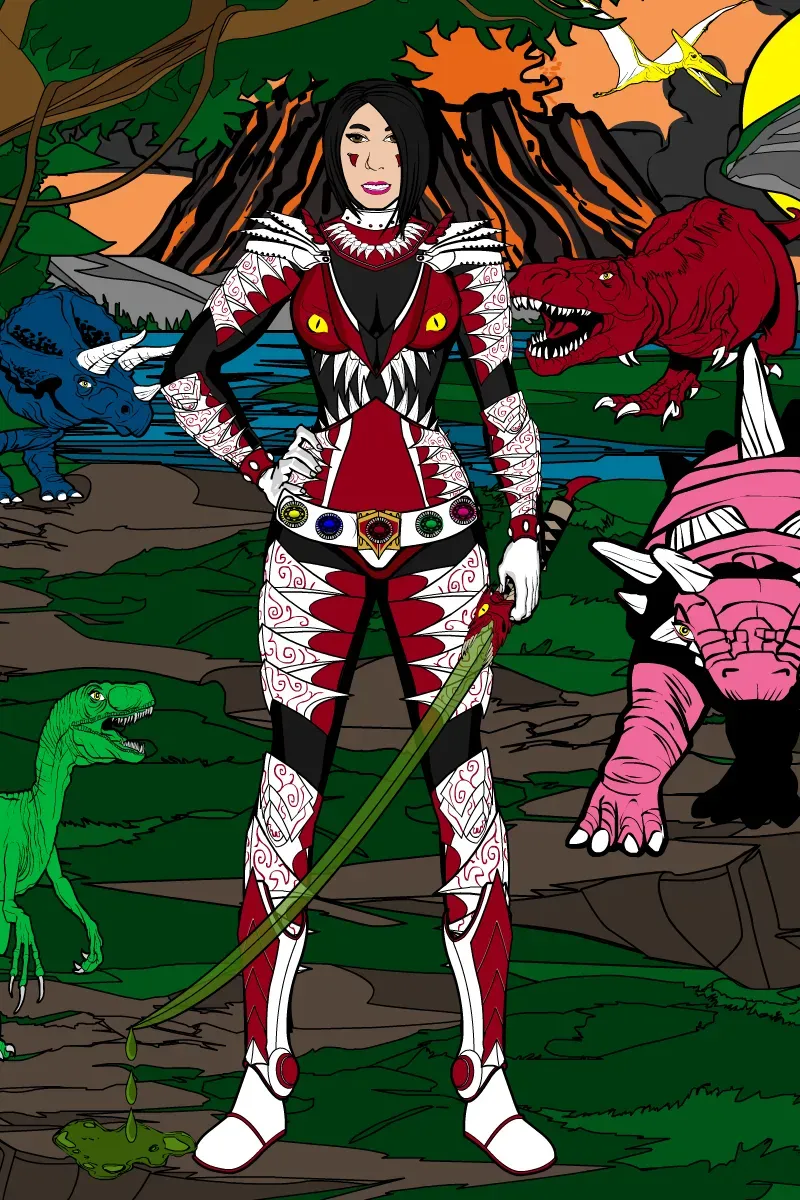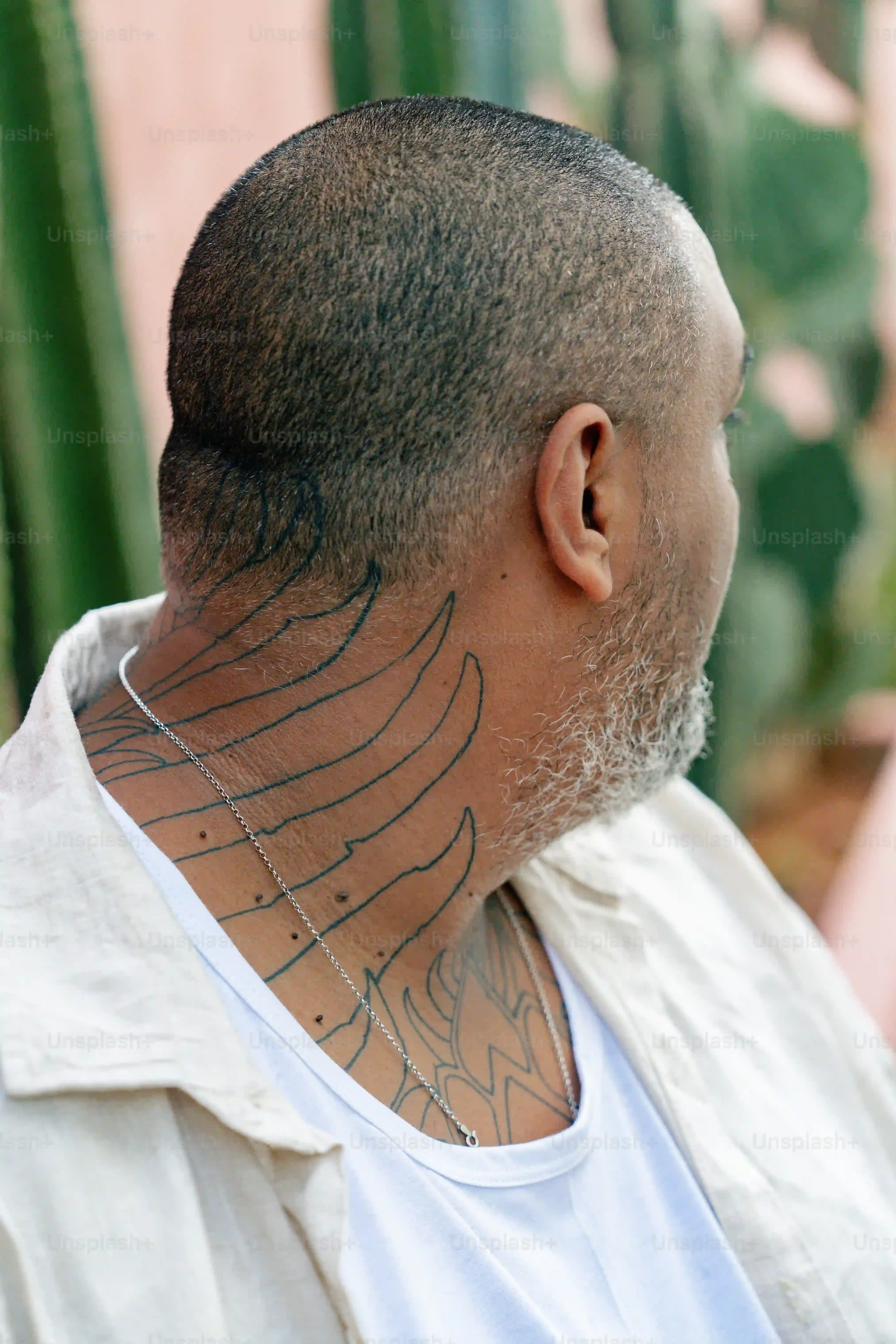Table of Contents
Walk down the street today, and you might spot ink that makes you pause. We're talking about those classic images, the ones that scream a certain kind of history, often referred to as old school gangster tattoo designs. Maybe you've seen them in movies, on people, or just online and wondered, "What's the deal with those?" They look tough, sure, but there's a whole lot more to them than just aesthetics.
The Raw History Behind the Ink
The Raw History Behind the Ink
Forget everything you think you know about fancy tattoo shops and sterile needles. The raw history behind the ink we're talking about comes from a much grittier place. These marks weren't about looking cool for Instagram; they were earned, often painfully, in environments where trust was scarce and communication could be dangerous. Think makeshift tools – sharpened guitar strings, melted plastic pens, even sewing needles – and rudimentary inks made from soot, ash, or melted shoe polish mixed with urine or water. Hygiene? An afterthought, if it was considered at all. The process itself was a test of endurance, a commitment to a lifestyle or a group that demanded loyalty, sometimes paid for in blood or years behind bars. This wasn't art for art's sake; it was identity, worn on the skin, a permanent record of who you were and where you belonged.
Common Old School Gangster Tattoo Designs and Their Meanings
Common Old School Gangster Tattoo Designs and Their Meanings
So, what did these guys actually get inked? It wasn't about picking something pretty off the wall. Each design carried weight, a specific message understood by those in the know. Think teardrops – often signifying a killed rival or time served, though the exact meaning could shift depending on the location or context. Spiderwebs, usually on the elbow or knee, might mark time in prison, the wearer stuck in the system like a fly in a web. Clocks without hands screamed "time served," the endless, stagnant nature of being locked up. Three dots in a triangle? "Mi Vida Loca" – My Crazy Life – a simple, powerful statement of embracing a chaotic existence. These weren't just cool pictures; they were resumes, warnings, and declarations of allegiance etched permanently onto the skin, part of the whole landscape of common old school gangster tattoo designs.
The Roots and Realities of Old School Gangster Tattoo Designs
The Roots and Realities of Old School Gangster Tattoo Designs
Where Did These Designs Come From?
so you're asking about the roots of old school gangster tattoo designs. Think back to the mid-20th century, especially in places like California and the Southwest. A huge part of this style comes straight out of Chicano culture and the prison system. For guys who were locked up, tattoos weren't just decoration. They were a way to communicate, to show allegiance to a crew or barrio, to mark time, or to tell their life story without saying a word. Inside those walls, where privacy was non-existent and trust was a luxury, your skin became your billboard. These designs weren't sketched out on fancy paper; they were often passed down, learned, and replicated using whatever was on hand.
The Hard Realities of Getting Inked Back Then
Getting one of these old school gangster tattoo designs wasn't a trip to a clean studio with anesthetic cream. This was DIY, often brutal. Imagine someone rigging up a motor from a Walkman, attaching a sharpened paperclip or needle, and dipping it in ink made from burned baby oil or melted boot heels. Infections were common, cross-contamination was a given, and the pain? Well, let's just say it wasn't for the faint of heart. These tattoos were earned through suffering, making them even more significant to the wearer. They were a permanent commitment, not just to the design, but to the life that design represented. There was no laser removal back then; you wore your choices forever.
Beyond the Prison Walls: Meaning and Misinterpretation
While many old school gangster tattoo designs originated within the confines of prison or specific neighborhoods, their meanings weren't always static. A design might mean one thing in San Quentin and something slightly different on the streets of East LA. Over time, some symbols became more generalized, recognized even by outsiders, though their deeper context might be lost. Today, you see elements of this style popping up everywhere, sometimes worn by people with zero connection to the origins. It’s a strange mix – a style born of hardship and necessity becoming a fashion statement. It raises questions about respect, appropriation, and whether the raw history behind the ink gets diluted when it goes mainstream.
Getting Your Own Old School Style Tattoo: What to Know
Getting Your Own Old School Style Tattoo: What to Know
Finding an Artist Who Gets It
so you've read about the history, you understand the weight these designs carry, and you're thinking, "Maybe I want something in that style." Great. But hold up a second. This isn't just walking into any shop and pointing at a picture. Getting an old school gangster tattoo design, or at least something inspired by that aesthetic, means finding an artist who actually understands the style. Look for someone with a portfolio showing solid black and gray work, clean lines, and a grasp of classic imagery like religious figures, script, or traditional Chicano art elements. Ask questions. See if they appreciate the history, not just the look. A good artist will respect the roots while creating something that works for you today.
Understanding the Symbolism (Really Understand It)
Before you commit to ink that might have originated in a prison yard or marked a significant life event for someone else, do your homework. Seriously. That teardrop isn't just a cool piece of face art; it means something specific to many people. Those three dots aren't just a minimalist design. Getting a tattoo with a loaded history without understanding or respecting that history is, frankly, a bit tone-deaf. Talk to your artist, research the specific symbols you're drawn to, and be sure you're comfortable wearing that meaning permanently. You don't want to accidentally signal something you're not, or worse, disrespect a culture or experience that isn't yours.
What to Expect When Getting Inked
Alright, you've found your artist, you understand the potential weight of your chosen design, and you're ready. What's the actual process like for these old school style tattoos? While you won't be dealing with melted boot polish or guitar strings (thankfully), the solid black and gray, the often bold lines, and the potential for larger pieces can still be a bit intense. Be prepared for sessions that might take time. The artist will likely use modern equipment, which is a massive improvement in safety and precision, but the core aesthetic relies on strong, deliberate work. Discuss the size, placement, and detail level with your artist. They can guide you on how the design will look and age on your skin, ensuring that your tribute to this powerful style is done right.
The Ink That Still Speaks
We've journeyed through the stark realities and coded language behind old school gangster tattoo designs. What started as survival markers and statements of allegiance in harsh environments evolved, sometimes into mainstream art, but always retaining a echo of their origins. These symbols weren't just inked decorations; they were resumes, warnings, and declarations etched into skin when other forms of communication were unreliable or impossible. Understanding them requires looking beyond the cool factor or the shock value and appreciating the raw history they represent. They stand as a testament to lives lived under pressure, a complex and often difficult legacy worn for the world to see.